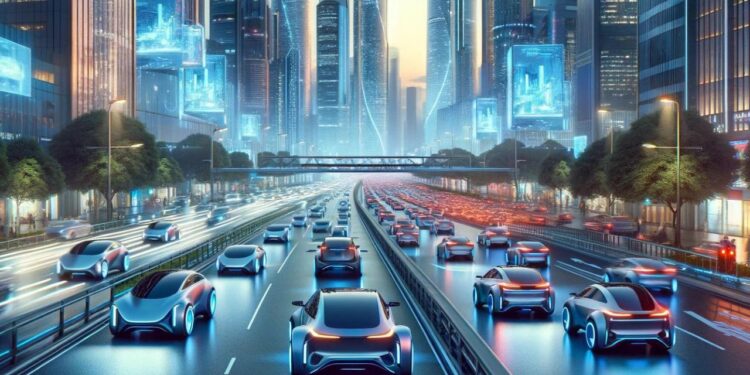In the not-so-distant future, your daily commute might no longer be a tedious journey from home to the office, but rather a seamless transition into a mobile workspace. The rise of autonomous cars is poised to revolutionize the way we work, transforming the backseat into a productive haven for professionals.
Recent developments in the automotive and tech industries suggest that this could actually be on the horizon for professionals looking to gain more productive time while on the move.
In the U.S., the idea of a self-driving car transporting you to and from work, as you attend a Zoom meeting, or collaborate with coworkers on a project remotely, could take off in Texas.
Moving to the Lonestar state has become an attractive option for autonomous vehicle companies like Cruise, a subsidiary of General Motors. Cruise trains autonomous vehicles on actual city streets — and that is as challenging as it sounds.
Last year, an incident in San Francisco left a pedestrian hurt and ultimately led to the suspension of Cruise’s license in California. After undergoing significant internal changes, including leadership shakeups, workforce reductions, and the appointment of a new chief safety officer, the company is gearing up to reenter the market.
According to a recent report published by Bloomberg, Cruise is planning to resume its autonomous vehicle tests after experiencing setbacks caused by the incident. Reuters reports that that the company has been considering several major metro areas across the country including two Texas cities, Houston and Dallas, as locations to resume testing with as few as 10 cars in each city — and no passengers. Prior to being suspended, it’s reported that the company had hundreds of cars across San Francisco, Phoenix, Houston, and Austin.
However, the development of autonomous vehicles is a collaborative effort, one that has many companies in both the tech and the automative world working together towards the same goal. A prime example is a recent collaboration announced between Hyundai Motor, Kia and KAIST.
According to a report published by The Economic Times, the trio of companies is pooling their expertise to develop next-generation LiDAR sensors that are both compact and cost-effective. The goal would be to reduce production costs needed to develop advanced autonomous vehicles.
As these advancements in autonomous vehicles progress, some manufacturers foresee the technology transforming idle travel time into productive work sessions — potentially turning cars into the next-generation of workspaces for professionals on-the-go.
Notable car manufacturers including Volvo, Audi and Cadillac are interested in the concept and are experimenting with the redesigning of vehicle interiors as well as self-driving technology, according to a report published by The Wall Street Journal. Volvo, with their 360c concept car, Audi’s Urbansphere, and Cadillac’s InnerSpace are just a few examples showcasing layouts ranging from spaces that resemble living rooms to offices — all within the confines of an autonomous electric vehicle.
Advancements in holographic technology are also expected to help enable “in-person” meetings from within these mobile offices, while advancements in generative AI could offer in-vehicle voice assistants for work-related tasks. Similar to the concept of a digital clone, which allows employees to operate in two places simultaneously, The Wall Street Journal reports that augmented reality (AR), virtual reality (VR), and metaverse integrations are expected to replicate “digital twins,” of physical offices inside cars — providing a seamless transition between traditional and mobile work environments.
As electric vehicles become more popular among consumers, the combination of advanced technologies opens space for such innovative mobile office designs. While self-driving offices may still be just a concept for the workforce, and consumers, the tech behind it has been under development for years now — hinting at a future where the commute is not just about getting from point A to point B, but also about productivity and connectivity from anywhere.


 Dr. Gleb Tsipursky – The Office Whisperer
Dr. Gleb Tsipursky – The Office Whisperer Nirit Cohen – WorkFutures
Nirit Cohen – WorkFutures Angela Howard – Culture Expert
Angela Howard – Culture Expert Drew Jones – Design & Innovation
Drew Jones – Design & Innovation Jonathan Price – CRE & Flex Expert
Jonathan Price – CRE & Flex Expert











